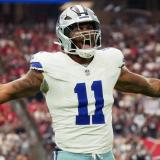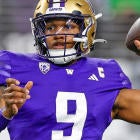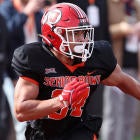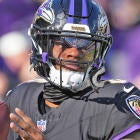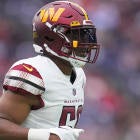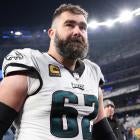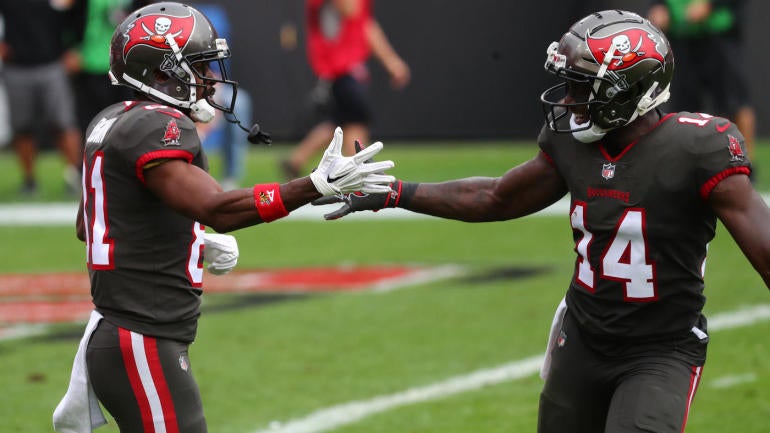
At the start of every NFL Draft season, I spend time thinking about the themes clubs are bound to take from the season and implement to their drafting plans. A few years ago, quarterbacks with experience running RPOs was the craze of the offseason. It's a copy-cat league, remember. There's actually no way you forget that, because that adage is repeated over and over and over every year.
Which trends from the 2020 season are teams most likely to follow or "copy" this offseason when rosters are reconstructed in preparation for the 2021 campaign? And no, you are not going to read "sign future first-ballot Hall of Fame quarterback" below. We're going a little deeper than that.
If your passing offense is good, you really don't need to draft a RB in Round 1
Disclaimer: This is not a criticism of Clyde Edwards-Helaire. I repeat -- this is NOT a criticism of Edwards-Helaire. It's a criticism of the Chiefs for using a first-round pick on a running back in the 2020 draft as a club with an established, high-octane passing offense.
Individually, Edwards-Helaire was good as a rookie -- he finished with the 14th-most forced missed tackles among all backs in the NFL. It's just very challenging for running backs, individually, to make a sizable impact on their respective team's offense, especially one that loves to air it out and is efficient doing so.
The Chiefs went from a Football Outsiders Offensive DVOA of +23.5% (3rd in NFL) in 2019 to a +23.9% (2nd) in 2020. Edwards-Helaire did not move the needle. For more classic context -- Kansas City's yards per play went from 6.2 last year to 6.3 in 2020. Negligible.
To encapsulate the lack of true impact made by Edwards-Helaire -- he carried it six times and gained seven yards in the conference title game against the Bills. Didn't matter. Then, in the Super Bowl, the rookie rushed nine times for 64 yards. Didn't matter.
Load up on offensive weapons. No, seriously. Get crazy with it.
When Tom Brady was signed by the Buccaneers, they had Mike Evans, Chris Godwin, O.J. Howard, Cameron Brate, and Ronald Jones as their primary skill-position players, a rock-solid group, and likely one of the main reasons the legendary quarterback decided on Tampa as his new team. Even with Jameis Winston's record-setting 30 interceptions in 2019, the Buccaneers managed to finish 18th in pass offense DVOA and their 5.9 yards per play was the sixth-highest.
It would've been perfectly reasonable for the Buccaneers to enter the season with that skill-position group. But the Buccaneers went shopping after the Brady signing and left no door closed when players became available. It was almost as if Brady knew, to win the Super Bowl, the Bucs had to absolutely load their roster with skill-position talent.
Right before the draft, Tampa Bay traded for the previously retired Rob Gronkowski. In the draft, GM Jason Licht picked two running backs: Ke'Shawn Vaughn in Round 3 and Raymond Calais in Round 7, along with a receiver -- Tyler Johnson -- in the fourth round. When Leonard Fournette was cut by the Jaguars before the regular season and LeSean McCoy was still available, Bucs GM Jason Licht channeled his inner Lloyd Christmas and said "pick 'em up!"
As if that wasn't enough, Antonio Brown was signed in late October.
The Buccaneers stocked the shelves for Brady like no team has stocked the shelves before. The abundance of skill-position talent rendered Howard's season-ending injury in Week 4 moot. It made for up-and-down play from their backfield, allowing for the hot-hand to take over feature-back duties at different stages throughout the year. And, while it took time for all the pieces to gel, the results were fantastic when it mattered most. They became the first team in NFL history to score 30-plus points in four-straight playoff wins in the same postseason.
(Also, too, the Buccaneers did finish the regular season third in offensive DVOA.)
For as much as you think skill-position talent -- especially receiver -- is important, look to the 2020 Bucs as a reminder as to how much shopping a team can conceivably do.
Scoring
The Buccaneers' win in Super Bowl LV marked the fifth-straight year (and six of the past seven years) that a team took home the Lombardi Trophy after it finished in the top five in points scored during the regular season.
Nine of the top 10 scoring teams made the playoffs, and the top three -- Packers, Bills, Buccaneers -- all participated in their respective conference's championship game.
Three of the top 10 teams in scoring defense missed the postseason and only one of those clubs -- Buccaneers -- were represented in the conference title games. Sure, Tampa's defensive lockdown in the Super Bowl was most memorable, but scoring points has never been more crucial to team success.
It's not just coachspeak -- the draft is absolutely vital
Every coach and especially every GM in the NFL will tell you the draft is critical. And they're right. It is. But free agency comes first, and it's easy to get caught up in that madness in March. While filling roster holes via that method carries its value, Tampa Bay proved that the importance of the draft cannot be overstated.
Tristan Wirfs. Antoine Winfield Jr. Devin White. Sean Murphy-Bunting. Jamel Dean. Mike Edwards. Scotty Miller. Vita Vea. Ronald Jones. Carlton Davis. Alex Cappa. Jordan Whitehead. All key players with varying roles on the Super Bowl-winning Bucs. All selected in the past three drafts.
Incredible. The recent masterclass in drafting provided the Buccaneers the money to add Brady, retain Jason Pierre-Paul and Ndamukong Suh, franchise tag Shaq Barrett, hang onto Lavonte David, sign Ryan Jensen, and extend Donovan Smith.
Pass rush
The 2020 season served a strong reminder that pass rush, well, your team needs more of it. Because it can tip the scales in any game. Of full-time starters, the average passer rating from a clean pocket was 103.4. While under pressure? Those quarterbacks averaged a passer rating of a grotesque 66.2.
For perspective -- Brady's overall passer rating was 102.2 during the regular season in 2020. Sam Darnold had the lowest passer rating among qualifying quarterbacks at 72.7.
So simply pressuring the quarterback is the difference between 2020 Brady and a passer worse than the worst starter -- by quarterback rating -- in the league.
And at a team level, the majority of the stingiest defenses got after the passer at the highest rates, while the opposite was true for the most porous units. Of the teams with the 16 highest pressure-creation rates, 13 finished in the top half of the league in defensive DVOA. Of the bottom 16 in pressure-creation rate, there were only three clubs that managed a top-half-of-the-league finish in defensive DVOA.
For the math geeks out there, pressure-creation rate and defensive DVOA ranking had a .64 correlation coefficient, which represents a moderate correlation.
We saw it with Bucs in the playoffs, the Steelers during the regular season -- a unit that essentially carried Pittsburgh to the playoffs -- the Rams, and the Washington Football team among others. Pass rush absolutely, positively matters more than ever before.







